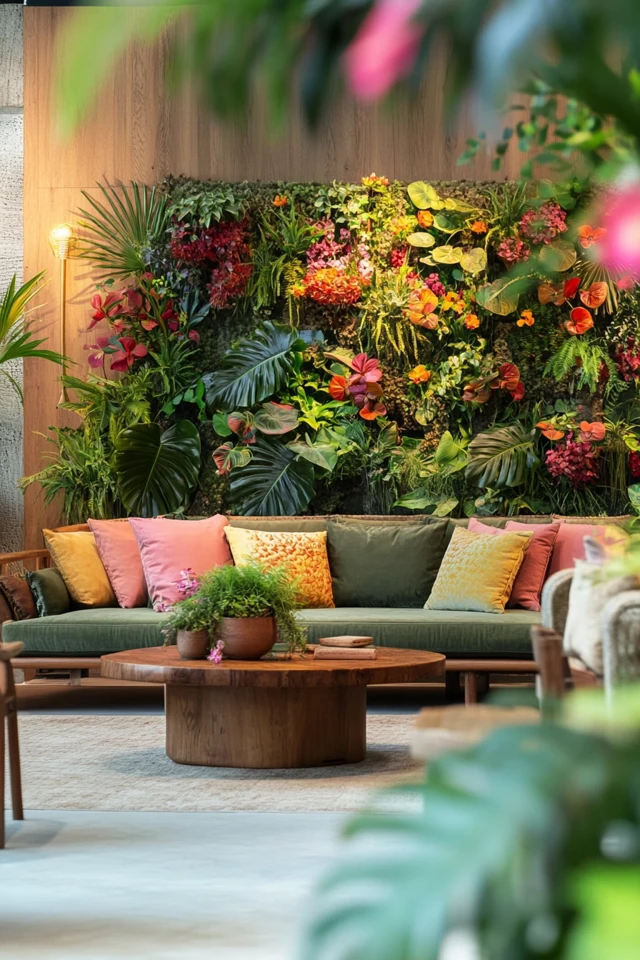Introduction
Bringing nature indoors is one of the most rewarding ways to transform your home. Plants, natural materials, and organic elements can create a calming, vibrant environment that reconnects you with the outdoors. However, it’s easy to go overboard—too many plants or excessive natural elements can clutter your space and have the opposite effect. The key to striking the right balance is intentionality: incorporating natural elements in a way that feels harmonious, elegant, and in tune with your home’s style.
I learned this lesson the hard way when I first tried filling my living room with as many plants as I could find. While it initially felt lush, the room quickly became crowded and overwhelming. After editing my collection and incorporating complementary materials like woven baskets, wooden furniture, and soft, natural textiles, the space felt balanced and refreshing. It was a great reminder that less can often be more when it comes to nature-inspired decor.
In this guide, I’ll share strategies for incorporating nature into your home thoughtfully. Whether you’re a plant lover, a fan of organic textures, or simply looking to bring a touch of greenery into your space, these tips will help you create a serene, nature-infused home without overcrowding.
The Perfect Design for You
Bringing nature indoors without overcrowding is perfect for anyone seeking to create a tranquil, stylish, and clutter-free environment. It’s especially ideal for urban dwellers who want to reconnect with nature or for those who love plants but worry about overwhelming their space.
Imagine a living room where a few well-chosen plants—like a tall fiddle leaf fig or a cascading pothos—are complemented by natural wood furniture and soft linen curtains. Or picture a bedroom with a single monstera leaf in a glass vase on the nightstand, paired with a jute rug and a woven basket for storage. These spaces feel alive and refreshing without being overrun by greenery.
No matter your style—minimalist, bohemian, rustic, or modern—nature-inspired decor can be tailored to fit your home while maintaining balance and elegance.
Picture Gallery
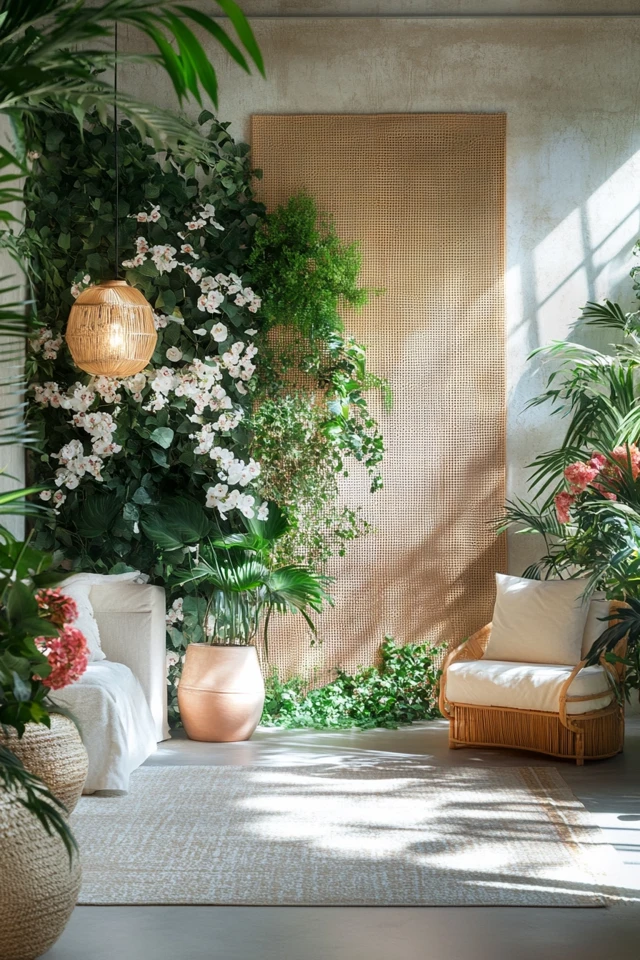
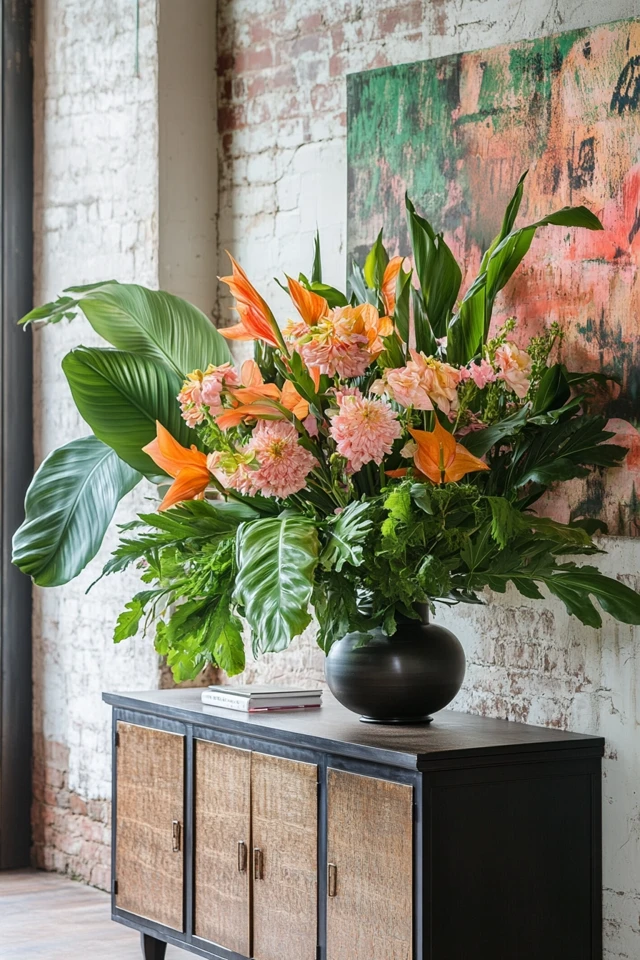
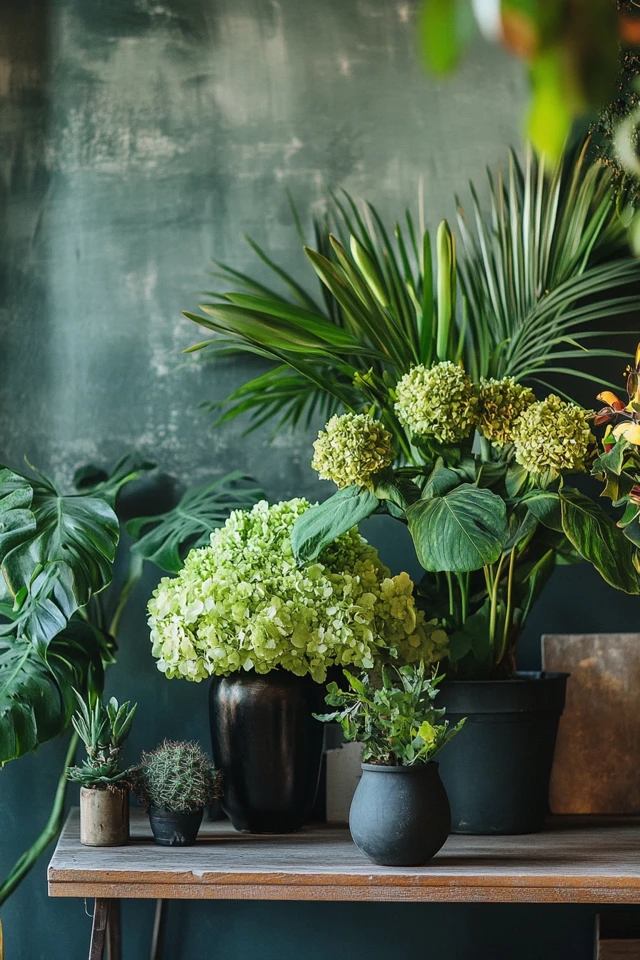
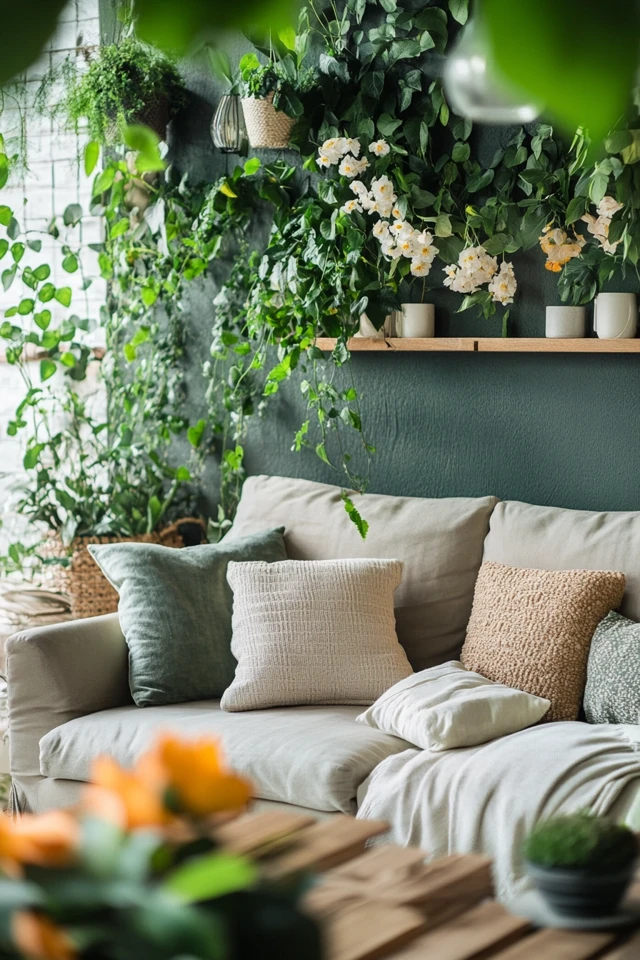
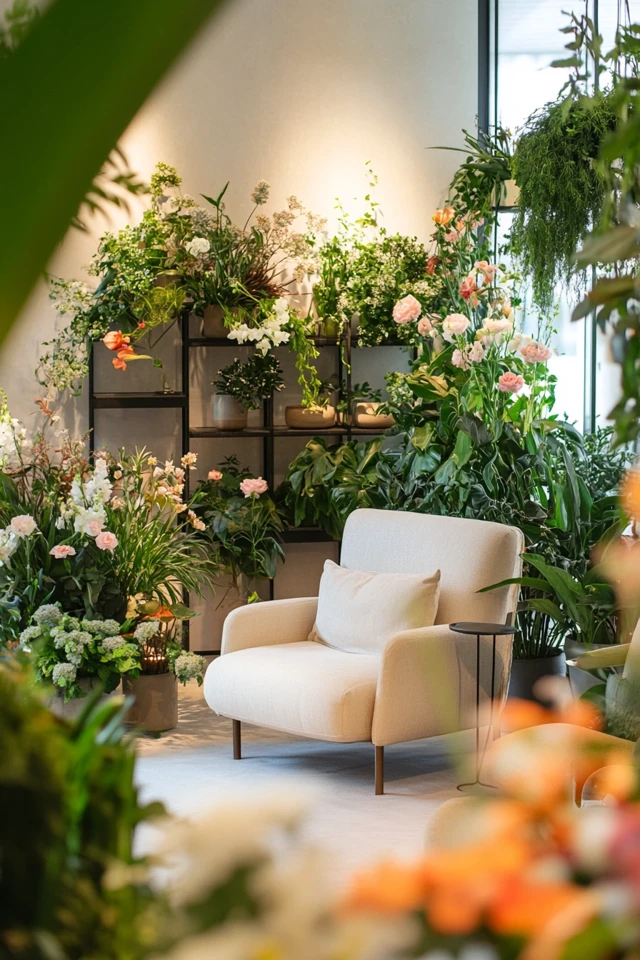
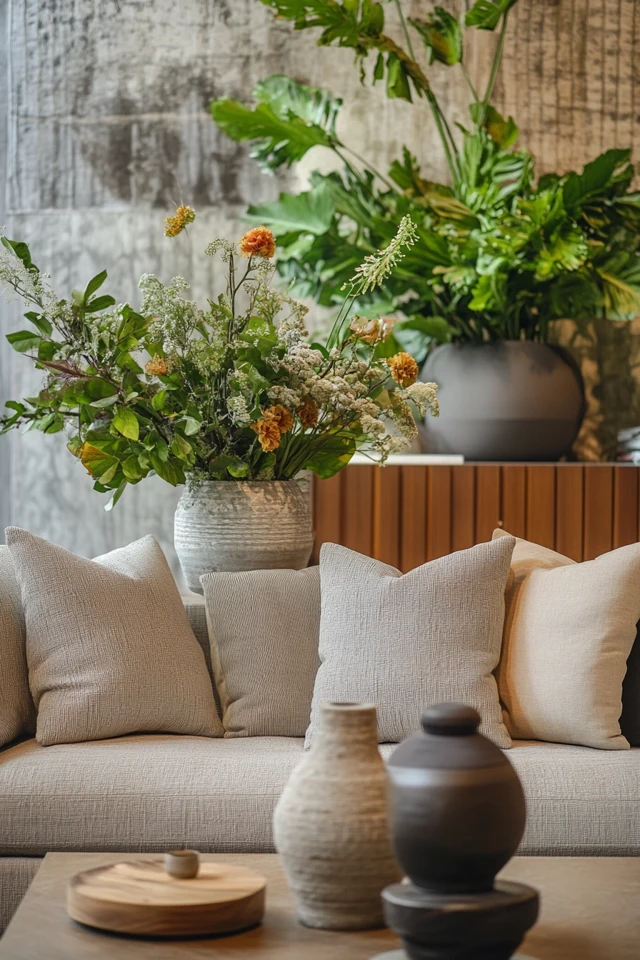
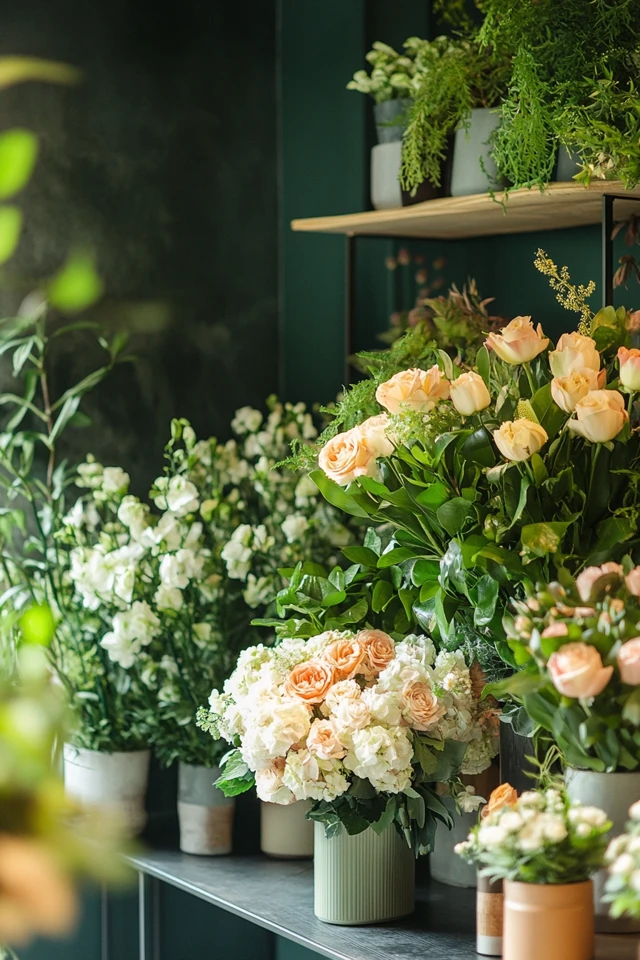
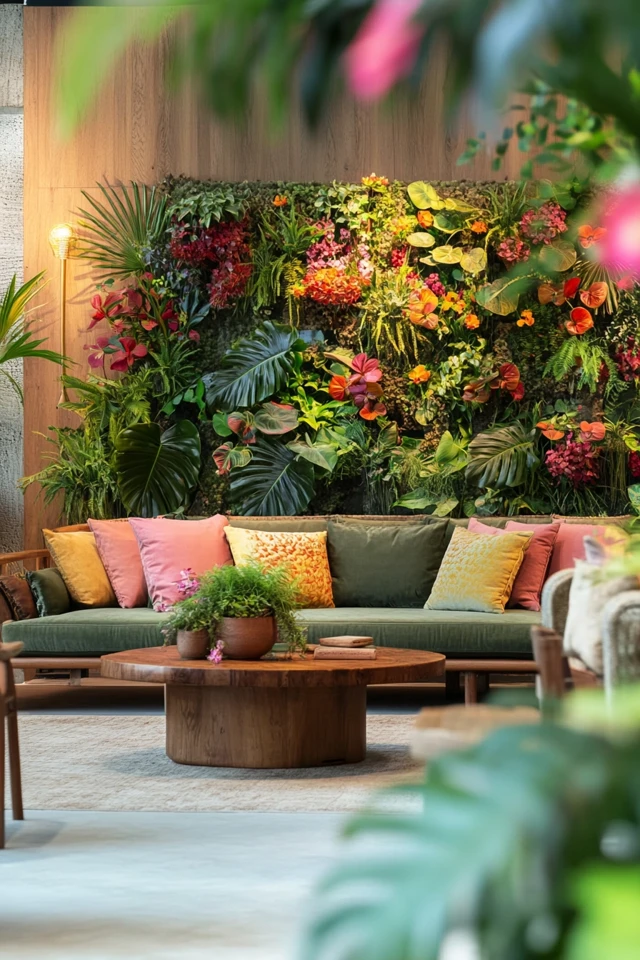
Why These Key Elements Work So Well Together
The art of bringing nature indoors lies in balance, texture, and intentional placement. Here’s why these key elements work so well:
- Balance: A few thoughtfully placed plants or natural elements are more impactful than a crowded space. Balancing greenery with open space allows each piece to shine.
- Variety in Texture: Combining natural materials like wood, stone, and woven fibers adds depth and dimension, making your decor feel dynamic and layered.
- Contrast with Neutral Backdrops: Greenery stands out beautifully against neutral tones or simple interiors, creating a clean and uncluttered aesthetic.
- Focal Points: A single statement plant or natural element can act as a focal point, drawing the eye without overwhelming the room.
- Functionality and Style: Natural decor should enhance your space both visually and functionally, from purifying the air to adding warmth and personality.
Studies in biophilic design show that incorporating natural elements into our homes can reduce stress, improve mood, and promote well-being. By carefully curating these elements, you can enjoy all the benefits of nature without sacrificing style or simplicity.
How to Bring Nature Indoors Without Overcrowding: Step-by-Step
1. Start with a Clear Vision
- Decide on the mood and style you want to achieve. Do you want a minimalist space with a few standout plants, or a cozy, nature-inspired retreat with layered textures?
2. Choose Statement Plants
- Select one or two larger plants to anchor the room. Examples include:
- Living Rooms: A fiddle leaf fig, bird of paradise, or rubber plant in a corner.
- Bedrooms: A snake plant or monstera for a serene vibe.
- Bathrooms: A trailing pothos or ferns that thrive in humidity.
3. Use Smaller Plants as Accents
- Complement larger plants with a few smaller ones placed strategically:
- Add succulents or cacti to shelves, coffee tables, or desks.
- Use trailing plants like ivy on bookshelves for a cascading effect.
- Place a small herb garden on your kitchen windowsill.
4. Incorporate Natural Materials
- Layer natural textures alongside your plants for a cohesive look:
- Use wooden furniture, woven baskets, and rattan chairs for warmth.
- Incorporate stone accents, like marble coasters or a concrete planter.
- Add soft textiles, such as linen curtains or a jute rug, to ground the space.
5. Highlight Architectural Features
- Use greenery to draw attention to architectural elements:
- Place tall plants near windows to frame the view and bring the outdoors in.
- Add a climbing plant like a philodendron near exposed beams or pillars.
- Use a small plant arrangement to soften hard edges, such as bookshelves or countertops.
6. Create Groupings with Intention
- Cluster plants in odd numbers (groups of 3 or 5) for a natural, organic feel:
- Mix plants of varying heights and textures for visual interest.
- Pair smaller plants with larger ones to create balance in a grouping.
7. Use Vertical Space
- Maximize your space without overcrowding by going vertical:
- Install wall-mounted planters or floating shelves for small pots.
- Use a hanging macramé planter for trailing plants.
- Add a vertical garden for herbs or succulents in the kitchen or balcony.
8. Add Natural Decor
- Use decor inspired by nature to complement your greenery:
- Place dried pampas grass, eucalyptus, or a single monstera leaf in a vase.
- Display natural stones, crystals, or driftwood as decor accents.
- Use botanical art or photography to bring a natural touch to your walls.
9. Prioritize Functionality
- Choose plants that suit your lifestyle and space:
- Low-maintenance plants like ZZ plants and snake plants are ideal for busy schedules.
- Use air-purifying plants like peace lilies or spider plants in shared spaces.
10. Edit and Rotate
- Periodically evaluate your space to prevent overcrowding:
- Rotate plants seasonally to refresh the look.
- Remove plants or decor that feel excessive or out of place.
FAQ
1. How do I prevent plants from overcrowding my space?
Choose fewer, larger plants instead of many small ones. Use vertical space and group plants strategically to avoid clutter.
2. What are the best low-maintenance plants for beginners?
Snake plants, pothos, ZZ plants, and succulents are easy to care for and thrive in various conditions.
3. How do I style natural materials with greenery?
Pair plants with materials like wood, rattan, stone, and linen for a cohesive, nature-inspired look. Use baskets, planters, and textiles to layer textures.
4. Can I bring nature indoors without using real plants?
Absolutely! Use dried flowers, faux plants, botanical prints, and natural materials like wood and stone to achieve a similar effect.
5. How do I highlight plants without overwhelming the design?
Place plants strategically as focal points and pair them with neutral backdrops or simple decor to let them stand out.
Variations
- Minimalist Nature: Focus on one or two large plants, paired with clean lines and neutral tones for a serene, uncluttered look.
- Bohemian Retreat: Layer plants with woven baskets, patterned rugs, and macramé planters for a cozy, eclectic vibe.
- Modern Elegance: Use sculptural plants like fiddle leaf figs or snake plants, combined with sleek pots and metallic accents.
- Rustic Charm: Incorporate wooden furniture, terracotta planters, and greenery for a warm, nature-inspired aesthetic.
- Urban Jungle: Go bold with a variety of plants in different sizes and textures, using vertical space to maximize greenery without overcrowding.
How to Showcase It
- Living Rooms: Use a tall plant as a focal point in a corner, complemented by smaller plants on shelves or a coffee table.
- Bedrooms: Place a single, calming plant like a peace lily or snake plant on a nightstand or dresser for a serene touch.
- Kitchens: Add fresh herbs in small pots near the windowsill or a vertical garden for a functional and decorative element.
- Bathrooms: Use humidity-loving plants like ferns or pothos to add a spa-like atmosphere.
- Entryways: Create a welcoming vignette with a statement plant and natural decor, like a woven basket or wooden bench.
Occasions to Feature It
- Everyday Tranquility: Enjoy the calming effect of nature in your daily life, creating a serene and balanced home environment.
- Seasonal Transitions: Refresh your decor with seasonal plants or natural elements, like spring flowers or autumnal branches.
- Entertaining Spaces: Use greenery and natural textures to create a warm, inviting atmosphere for guests.
- Creative Retreats: Design a cozy nook with greenery and natural materials to inspire relaxation and creativity.
- Housewarming Celebrations: Showcase your thoughtful, balanced approach to nature-inspired decor during gatherings.
Conclusion
Bringing nature indoors is about more than just adding greenery—it’s about creating a harmonious and balanced space that reflects the beauty of the natural world. By incorporating plants, natural materials, and organic textures with intentionality, you can enjoy the benefits of nature without overcrowding your home.
Whether you’re layering soft textiles, adding a statement plant, or showcasing natural decor, the key is to find a balance that enhances your space’s flow and functionality. Remember, less is often more when it comes to nature-inspired design.
So start small, experiment with placement and textures, and let nature transform your home into a serene and stylish retreat. With these tips, you’ll create a space that feels refreshing, inviting, and perfectly in tune with the outdoors.

